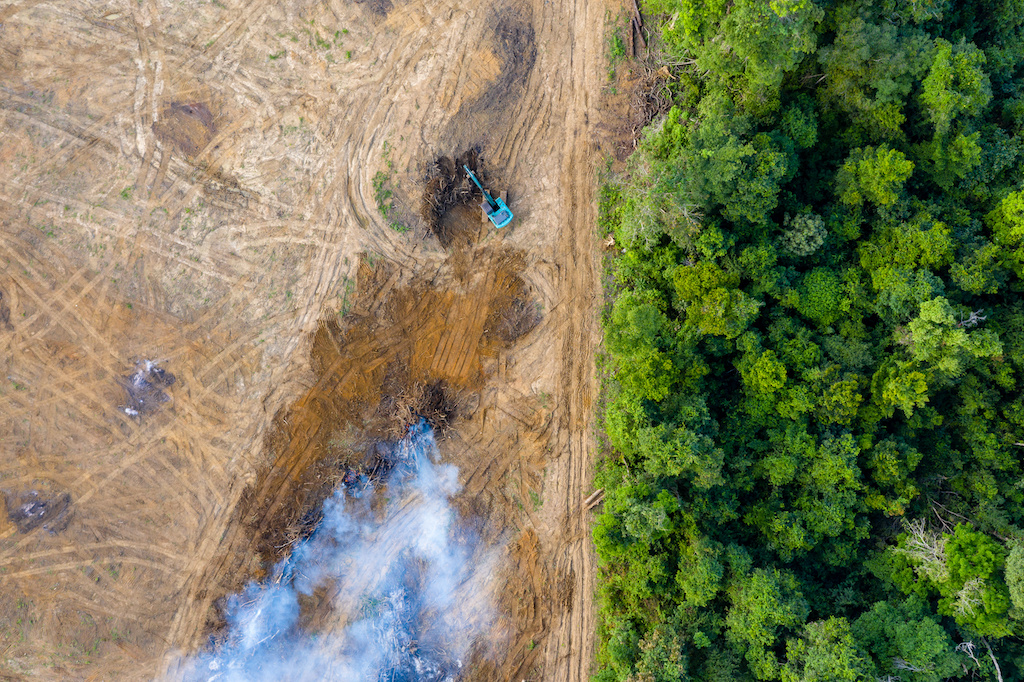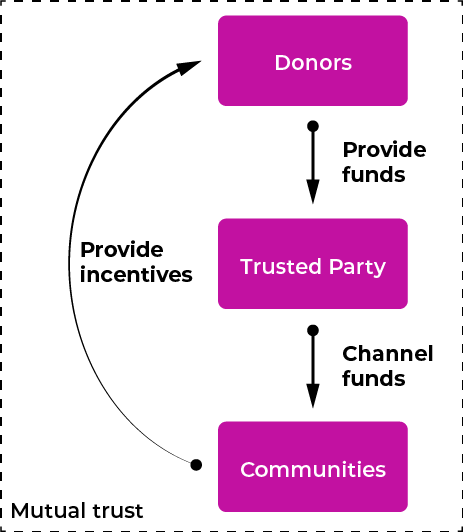Whitepaper
Rainforests & The Climate Crisis
"To reconnect with nature is key if we want to save the planet" - Jane Goodall
 Figure 1: Deforestation is responsible for 17% of global greenhouse gas emissions
Figure 1: Deforestation is responsible for 17% of global greenhouse gas emissions
The climate crisis and nature
The climate crisis is humanity's primary challenge, with increasingly severe consequences as natural disasters multiply, sea levels rise, and ecosystems falter; demanding urgent, decisive action in line with the Paris Agreement. Agriculture, forestry, and other land use (AFOLU) is a key driver of climate change, accounting for 23% of total anthropogenic emissions of greenhouse gases during 2007-2016, largely driven by deforestation and forest degradation. Deforestation does not only release carbon (e.g., through slash-and-burn), but also destroys a multitude of other forest ecosystem services: preserving biodiversity, counteracting flooding and soil erosion, filtering water, preventing diseases, and offering a livelihood for the local population.
The causes of deforestation
The causes of deforestation are mostly economically driven: expansion of commercial or subsistence agriculture, logging, fuel wood collection, or livestock grazing. The domain is particularly challenging, given that the world's growing population and rising standards of living exert increasing pressure on food and consumer goods production, both leading to conflicting objectives with climate change and biodiversity. Rainforests cover less than 10% of the earth's land surface, but close to 1.6 billion people in the world depend on healthy forests for their livelihood. They house approximately 50 million indigenous inhabitants and over 50% of the planet's biodiversity. To counteract the economic incentives, climate policies such as payments for ecosystem services (PES) are increasingly provided to forest conserving or restoring landowners by international stakeholders. The REDD+ program (Reducing Emissions from Deforestation and Forest Degradation), is UNFCCC’s scheme for the reduction of emissions caused by forest protection measures while commercial voluntary carbon markets offers conservation projects the ability to trade carbon offset certificates.
Linking corresponding payments
Linking corresponding payments with carbon emissions and ecosystem restoration is a resource-intensive and complex task without clear consensus and standards. Current methods for monitoring, reporting, and verification (MRV) of the community-provided forest ecosystem services are either based on on-ground inspection which is too expensive (USD 20-30k), delayed (up to two years), corruptible, and biased; satellite which is low-cost, but limited to the binary verification of forest/no-forest cover; or drones which are difficult to access. There are often inconsistencies in reported data and insufficient levels of transparency due to misaligned incentives, resulting in a lack of actionable projects. Current efforts fall short of fully leveraging the process and technology options available today and communities are often left alone with the daunting task of monitoring and applying for funds themselves while having to pay large upfront costs to third-party certifiers.
"Did you know?
Landowners often have to pay many years of revenue upfront (ca. 300 USD per hectare) to industrial certifiers, making carbon certificates only accessible for large-scale conservation projects. Worse, local communities in the end often receive less than 30% of the total credit revenue.
The net result is insufficient climate action and private stakeholder engagement - and a collective failure to meet the set climate targets.

Figure 2: The reliance on mutual trust between all parties, discontinuous transactions through a trusted third party and missing incentives cause a lack of sustainable funding for climate action
Introducing GainForest
GainForest is an open platform that empowers sustainable conservation efforts by unifying 1) accessible and automated monitoring, 2) auditable and decentralized payments and 3) stakeholder engagement and user-focused token incentives into one system. Private stakeholders can pledge money to indigenous communities and forest conservation projects through GainForest's smart contracts. The GainForest platform then automatically unlocks donations to communities responsible for protecting ecosystems when monitored milestones are achieved, while at the same time compensating stakeholders for their trust in these communities with a tokenized reward system. We believe that GainForest enables payments from private citizens to local communities in need at a much faster, easier, and safer rate than existing approaches with less legal work, resulting in urgently needed and accelerated climate action
"Did you know?
The GainForest Association is a non-profit based in Zurich, Switzerland that drives the design and development of the platform and consists of an interdisciplinary and international team of young academics and engineers.
Whitepaper overview
In this whitepaper we will firstly introduce the vision and design principles that guide the GainForest platform. Secondly, we describe the underlying blockchain-based system and the inner workings of our decentralized fund. Third, we provide an analysis of the token economics behind the platform. Afterwards, we summarize the role of machine learning and earth observations within GainForest. Lastly, we provide a strategic roadmap for current pilots and real-world impact.